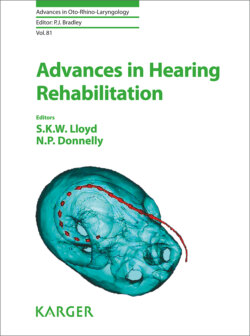Читать книгу Advances in Hearing Rehabilitation - Группа авторов - Страница 20
На сайте Литреса книга снята с продажи.
X-Ray Microtomography
ОглавлениеAnother potentially interesting experimental imaging technique that helps in the visualization of the middle and inner ears is X-ray microtomography (micro-CT).
The concept of micro-CT is similar to clinical CT with an X-ray source and detector rotating around the region of interest. However, unlike classical CT scanners that have linear detectors scanning one layer after another, micro-CT uses 2 CCD cameras as a 2D detector providing cross-section up to 4,000 × 4,000 pixels. The 2D detector reduces the scanning time dramatically compared to linear detectors. Isotropic datasets that allow visualization of any arbitrary cross-section in any orientation may be obtained. Micro-CT machines have a reduced field of view (up to 68 mm in diameter and 200 mm long) but this is compensated by very high resolution (down to 9 micron). This high resolution is not related to the object size.
Micro-CT is a powerful technique that allows visualization of the internal structure of opaque preparations [9, 10]. In biomedical research, micro-CT has not only been applied for studying bones and calcified tissues [11–14], but also for imaging soft tissues such as lung tumors [15]. One of the potential new applications of micro-CT is the visualization of the inner ear tissues with semi-histological quality (Fig. 7) and evaluation of the surgical aspects of newly developed cochlear implant electrodes [16] (Fig. 8). Unfortunately, high radiation doses make it unsuitable for clinical practice, but it is a useful research tool that provides high resolution without the need for bone decalcification or extensive processing of the samples.
